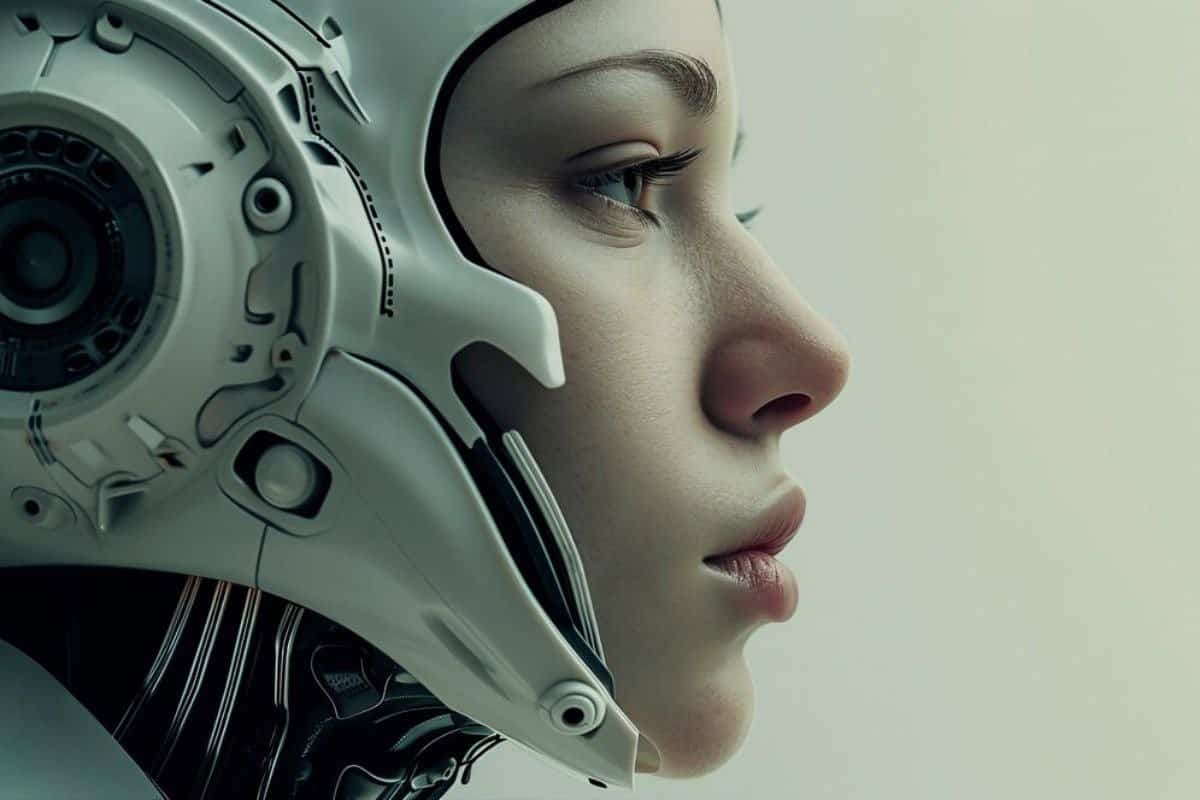We now live in a technologically advanced era.
Although advancements have not reached the level of mind-reading, there are alternatives that give the semblance of mind-reading and one of these is AI-generated images.
With artificial intelligence, it is easy to generate high-quality images by just describing what you have in mind to whatever AI assistant you choose.
AI image generators have become more popular than you would expect, and various organizations are beginning to adopt the technology. For example, social media apps like Instagram, Snapchat or ImagineArt have built-in AI image generator features through prompts that help you create images with AI. Major platforms are integrating AI image generator capabilities directly into their workflows, making text-to-image creation accessible to millions of users.
For example, Social media apps like Instagram and Snapchat have filters and prompts that help you create an image with AI.
But have you ever stopped to think about how AI-generated images came about, or what was the first AI generated image?
What Is an AI-Generated Image?
The concept of artificial intelligence provides enough information to understand what an AI-generated image represents.
But if you don’t understand it, this is for you.
An AI-generated image is a picture created with the help of artificial intelligence. often powered by Generative AI, which specializes in producing new and original content like text, visuals, or even music.
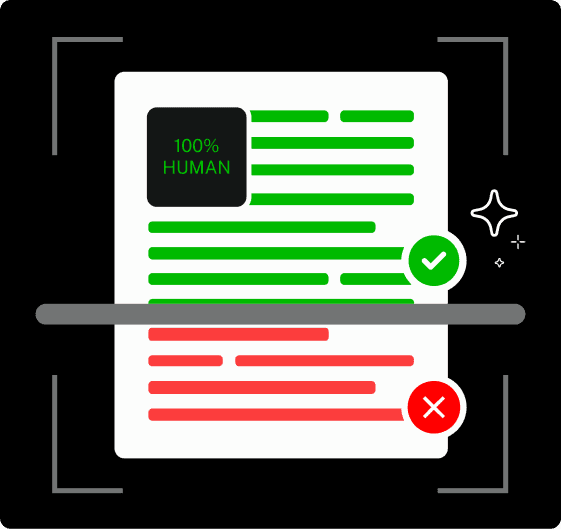
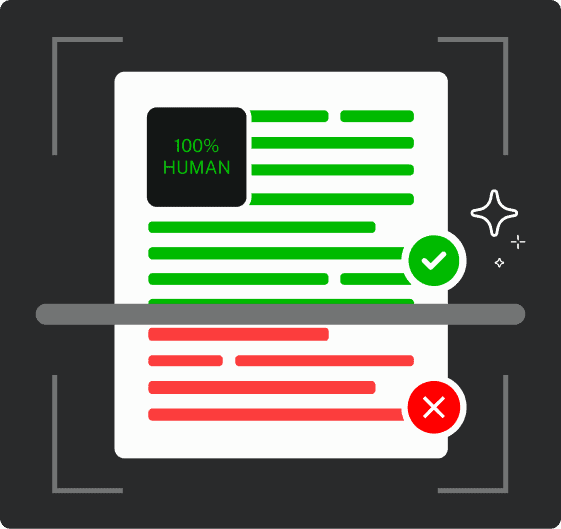
Never Worry About AI Detecting Your Texts Again. Undetectable AI Can Help You:
- Make your AI assisted writing appear human-like.
- Bypass all major AI detection tools with just one click.
- Use AI safely and confidently in school and work.
So you know how an artist uses paint, brushes and strokes to create an image, that’s how artificial intelligence works.
But the interesting part is instead of using brush and paint like a human artist, AI uses algorithms and codes to work.
Instead of careful strokes and flicking of the wrist, AI processes data, learns patterns, and creates an image based on the description you give.
Just like human art creation that takes years and years to perfect and master, AI engineers take time to perfect the codes and data needed for AI Image generation.
Also, AI generated images are not only limited to portraits alone.
You can also create abstract art pieces realistic enough to pass as human-made.
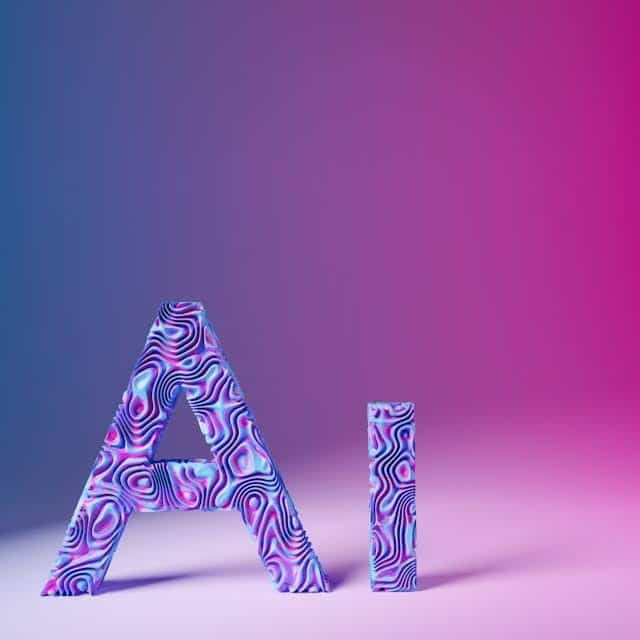
The First AI-Generated Image in History
So, what was the first AI-generated image? The first ever AI generated image was created by an AI system called the AARON.
This system was created by an artist and programmer, Harold Cohen.
The first AI-generated image was not as easy as we have now. It took Professor Cohen decades to train his AI system to draw and paint in his style.
But his creation was proof that computers could not only calculate, they were also capable of creating realistic art.
Harold Cohen equipped AARON with basic knowledge of physics and drawing.
The system uses this knowledge to complete tasks and create drawings from scratch—a different approach from what we have now, which doesn’t draw from scratch but relies on images from various databases.
The knowledge AARON has makes it possible for the software to make several decisions on its own, such as compositions.
Harold Cohen’s AI assistant was capable of using AI to create black-and-white art drawings.
When Was the First AI Image Created?
So, when was the first AI generated image made? Harold Cohen began developing AARON in the late 1960s but he made the first AI image in 1973.
Timeline of Early AI Art Milestones
Here is a timeline of Early AI Art Milestones:
1960s
Early AI art started in the 1960s, and it began with the innovation of the following people:
Georg Nees
Georg Nees was one of the primary innovators of AI art, digital art, and generative art.
He created the first computer graphics in Germany.
Some people refer to Nees as an academic genius who found his way to computer art through mathematics, physics, and philosophy.
Georg worked at Siemens, and he was tasked with finding a way to make the company’s machine, the Zuse Graphomat Z64, useful.
During his experimentation with the Z64, he figured out a way to create graphics with the machine.
In 1965, he became the first generative computer graphic artist to display their work in an exhibition at Stuttgart College.
Frieder Nake
Like Georg Nees, Frederick was also one of the pioneers of digital and generative art.
He produced his first work in 1963 called the Matrizenmultiplikation portfolio.
He made abstract images using a computer, a tape machine, and a drawing machine.
In 1999, he created Project CompArt: a space for computer art. He then became a theoretician, writer, creator, and teacher of digital art.
A. Michael Noll
Nake, Nees, and A. Michael Noll were described as the 3Ns of digital graphics.
Noll is known as one of the first technologists to go into computer art, digital art, and 3D animation.
In 1961, Michael Noll began his journey at Bells Labs in New Jersey.
At Bells Labs, he became interested in computer art when his colleague’s plotter created an error he found interesting.
Due to this, he began to explore similar system patterns with pseudorandomness.
Interestingly, Noll decided not to classify his work as art because he did not want any problems from the traditional art world.
Despite his refusal to classify, his works have been exhibited throughout the world. He was the first United States computer artist to exhibit at the Howard Wise Gallery.
1970s to 1980s
Originally, Harold Cohen began exploring the possibility of using computer programs for the creation of art in the 1960s.
His interest in computer art was due to his desire ‘to understand what art is.’ You could also say that he was interested in finding a way for him to create art after his death.
When Cohen created AARON, it could only produce monochrome line drawings that still had to be hand-coloured by Cohen.
But in the 1980s, Harold made modifications that allowed AARON to choose and apply colours itself.
The program was then able to produce real-world shapes such as foliage and human figures.
After updating AARON, Harold Cohen was able to display it at major art and technology institutions such as the Tate Modern and Whitney Museum of American Art.
The Technology Behind the First AI Art
The technology behind the creation of the first artificial intelligence art is AARON.
When Cohen developed AARON, the tool did not use deep learning or neural networks like we have today.
Instead, it worked with rules and algorithms that Harold took time and effort to code.
He gave AARON instructions on how to draw and mimic the creative process of an artist.
Cohen taught the tool how to draw lines, how to link lines to shapes and figures, how to draw curves and produce results that looked more original and realistic than computer art generated in the 1960s.
So you can say it focused more on the underlying logic of drawing.
You can think of Cohen’s efforts as teaching a robot to draw by giving it explicit instructions rather than showing it thousands of examples to mimic.
The approach that AARON used is very different from what we have now but the fact that it laid the foundation cannot be disputed.
Here’s how AARON worked:
- Rule-based Programming: The way AARON works is different from the modern tools we have now. Most modern tools use machine learning from other images to generate a new one but AARON functions on artistic rules that were manually coded into the program. The tool was manually taught how to draw shapes, balance proportions, arrange facial elements, shade, and add colours and textures.
The downside to Cohen’s approach was that he had to predict every possible scenario and code it.
You can imagine how much work and time Cohen spent before his tool could draw a single picture.
- Symbolic AI: This field of AI focuses on using symbols and logical rules rather than relying on data to mimic human-like reasoning. Early AARON could only draw simple black-and-white line drawings, but it was later upgraded to add colour and generate complex and more detailed artwork. Despite its upgrades, it still operated with Cohen’s logic.
Evolution of AI Image Generation Since the First Image
Artificial intelligence image generation has grown from the black and white drawings done by AARON.
The basic artworks have become hyper realistic and they are almost indistinguishable from human creations.
Here is how artificial intelligence image generation has evolved since the first image:
Generative Adversarial Networks (GANs) (2000s to 2010s)
First came rule-based programming art, and then came machine learning-based AI art.
Unlike the AARON era, artificial intelligence image generation in the machine uses deep learning and neural networks to create art.
So instead of relying on rules, AI images were created by studying and analyzing real images and generating new images based on the patterns and artistic style learned.
AI images could be generated because of the introduction of Generative Adversarial Networks (GANs).
GANs work with two neural networks, one that generates the artwork and another that evaluates it.
These two networks work together to create visually appealing images and demonstrate an understanding of artistic rules and techniques.
DALL-E (2021 till present)
In 2021, another AI system was created.
This system marked a turning point in generative AI. DALL-E was announced by OpenAI and it was described as a system capable of generating images from a text prompt.
The DALL-E system was able to produce realistic images in different styles, and it could also combine funny concepts and bring them to life.
It was built by modifying GPT. The DALL-E system was successful due to the amount of training data OpenAI fed into it.
In June 2023, OpenAI announced a new and improved system called DALL-E 2. It uses a more powerful algorithm called diffusion models.
DALL-E 2 was able to remove noise that had been added to an image.
In summary, the evolution of AI Image Generation brought about the following:
- Text-to-image AI. That is, by just typing in a description, you could generate AI art instantly.
- AI images that are realistic enough to pass as human-taken photos.
- AI tools for artists and photographers to enhance their work.
Verifying Modern AI Visuals with Deepfake Detection
As AI visuals evolved from rule-based systems like AARON to GANs and today’s diffusion models, verification became just as important as creation.
Our Undetectable AI’s Deepfake Detection helps confirm authorship and originality by analyzing pixel patterns, lighting and shadow consistency, compression artifacts, and even frame or audio sync for video.
Upload an image or clip and get a clear confidence score with highlighted regions that indicate likely manipulation or synthetic generation.
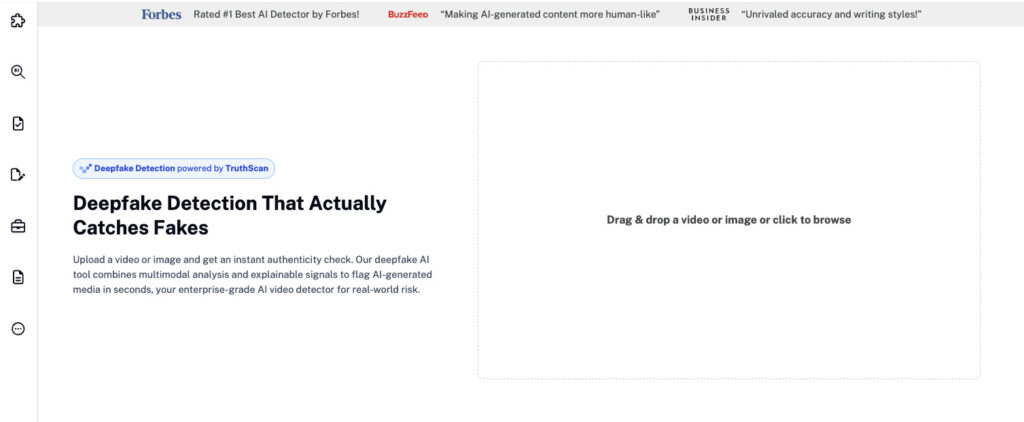
For historians of digital art, creators, and brands, Deepfake Detection bridges past and present: it respects where AI art started and keeps today’s visuals trustworthy.
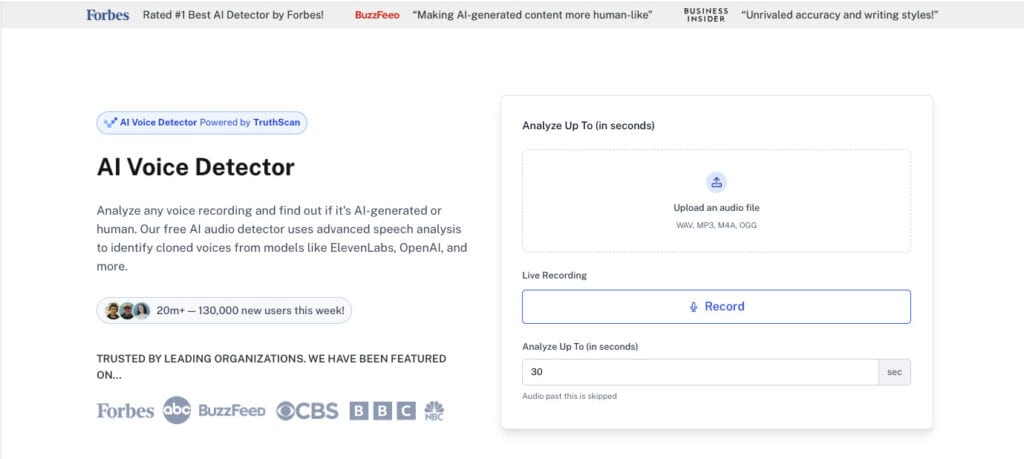
Enterprises using advanced AI writing tools often rely on voice-enabled features like voice dictation, audio responses, or conversational assistants.
To keep those interactions legitimate, our Undetectable AI’s AI Voice Detector helps verify whether a voice recording was generated by a human or an AI model.
It gives teams a simple way to review audio submissions, authenticate voice-driven workflows, and keep their AI-assisted communication secure and trustworthy.
How to Tell if an Image is AI-Generated
Artificial intelligence-generated images have evolved, and it is sometimes hard to tell what is real and what is not.
Here are a few signs of an AI-generated image:
- Unusual details and inconsistencies such as extra limbs and distorted faces.
- Overly perfect or smooth images
- Mismatched symmetry
- Misspelled word
Another way to spot an AI-generated image is by using the Undetectable AI Image Detector.
Our image detector can help you analyze an image and determine if it is real or AI instantly.
Here is how you can use the Undetectable AI image detector to detect Artificial intelligence images:
- Upload the image you want to check
- Click on ‘check image for AI’ to analyze
- Receive a details analysis of the image along with a confident score for accuracy
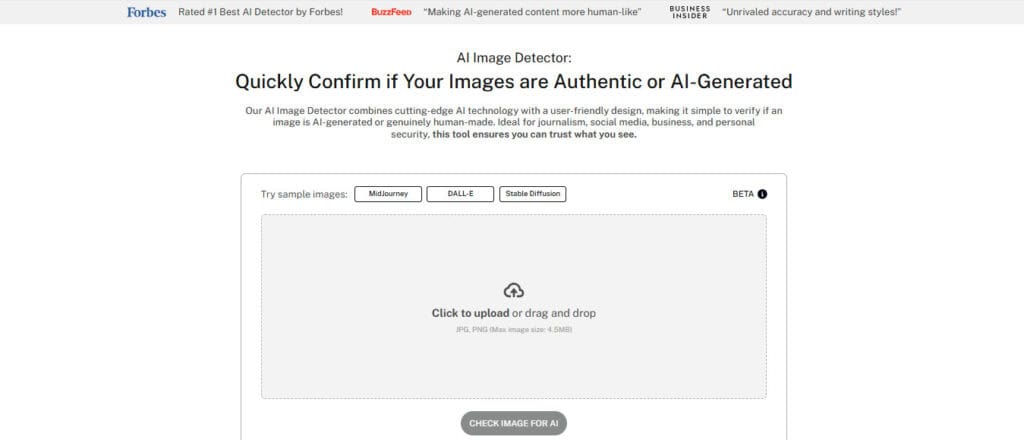
For deeper detection and historical insight, TruthScan’s AI Image Detector is another excellent tool designed to spot synthetic visuals — from vintage deepfakes to the latest diffusion model outputs.
It specializes in identifying manipulated images, GAN-based visuals, and AI-generated content that may otherwise pass for real.
Whether you’re researching early AI art or verifying media, TruthScan adds a powerful layer of forensic-level accuracy.
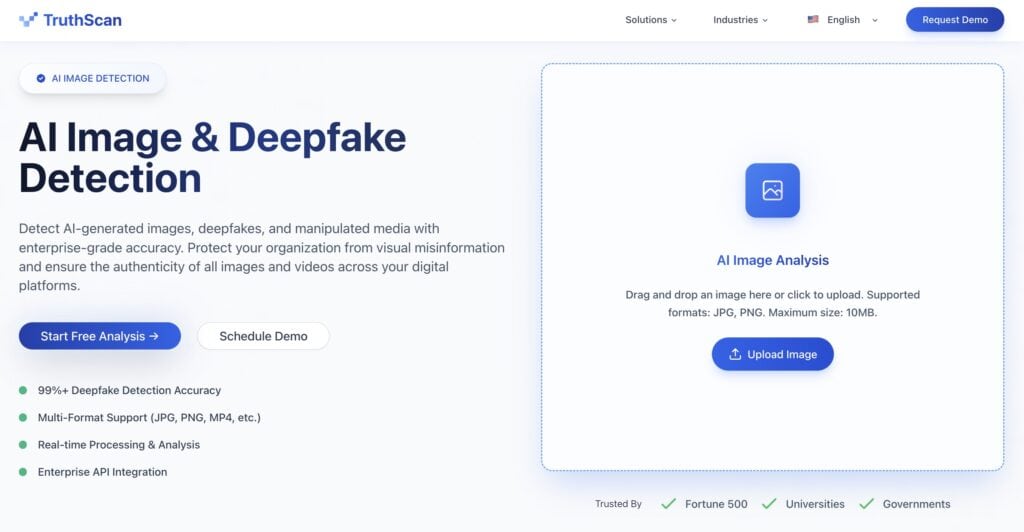
Feel free to check out our AI Detector and Humanizer in the widget below!
FAQs About the First AI-Generated Image
Is AARON Still Active or Available?
Since the death of Harold Cohen in 2016, AARON has not been updated.
So you can say that the tool is not active or in use.
Can Early AI Art be Copyrighted?
Although the copyright status of modern artificial intelligence art is still a gray area, early AI art created with AARON can be copyrighted as long as it is under the creator’s name.
Was the First Image Truly Creative or Just Code?
If you consider the fact that Cohen put so much effort into manually coding each rule AARON worked on, it would be safe to say that the first artificial intelligence image was creative.
AARON demonstrated a level of creativity because of its ability to make original decisions based on Cohen’s programming.
How is Modern AI Art Different From AARON’s Work?
The difference between modern artificial intelligence art and AARON’s work is the use of machine learning and neural networks.
While modern AI art relies on generating images from preexisting data, AARON relies on art rules programmed by Cohen.
AARON was more about the rules of art rather than creating realistic images.
Conclusion
The journey from the first AI art to modern artificial intelligence art has been remarkable.
Although the creation of the first AI art tool may have seemed primitive, it laid the foundation for digital creativity.
However, one thing still remains a cause for concern and that is the detection of AI-generated images.
How do you detect an AI-generated image? You can do so with Undetectable AI’s Image Detector.
Curious if an image is AI-made? Use Undetectable AI’s Image Detector to find out instantly.
Try Undetectable AI today.
